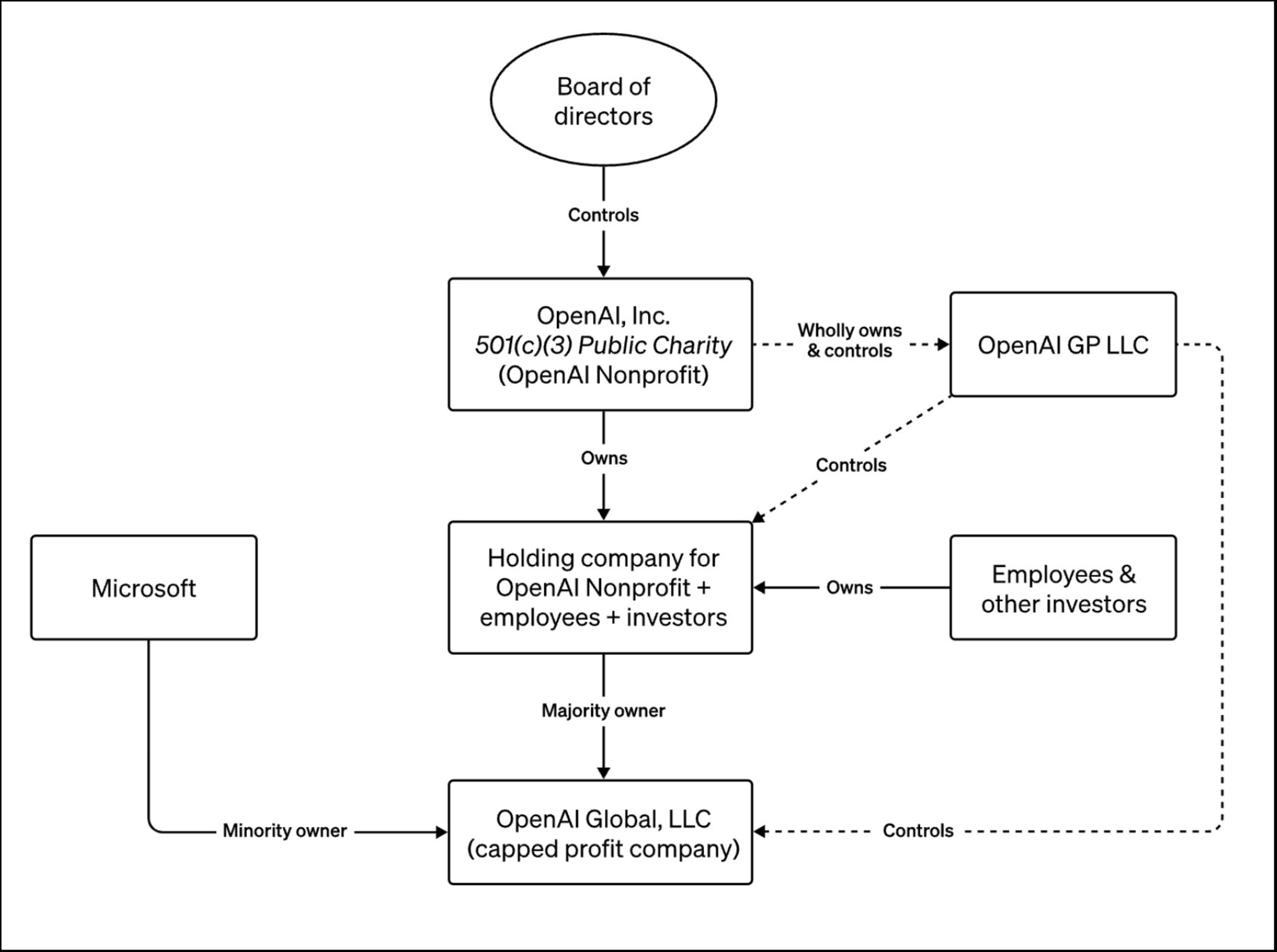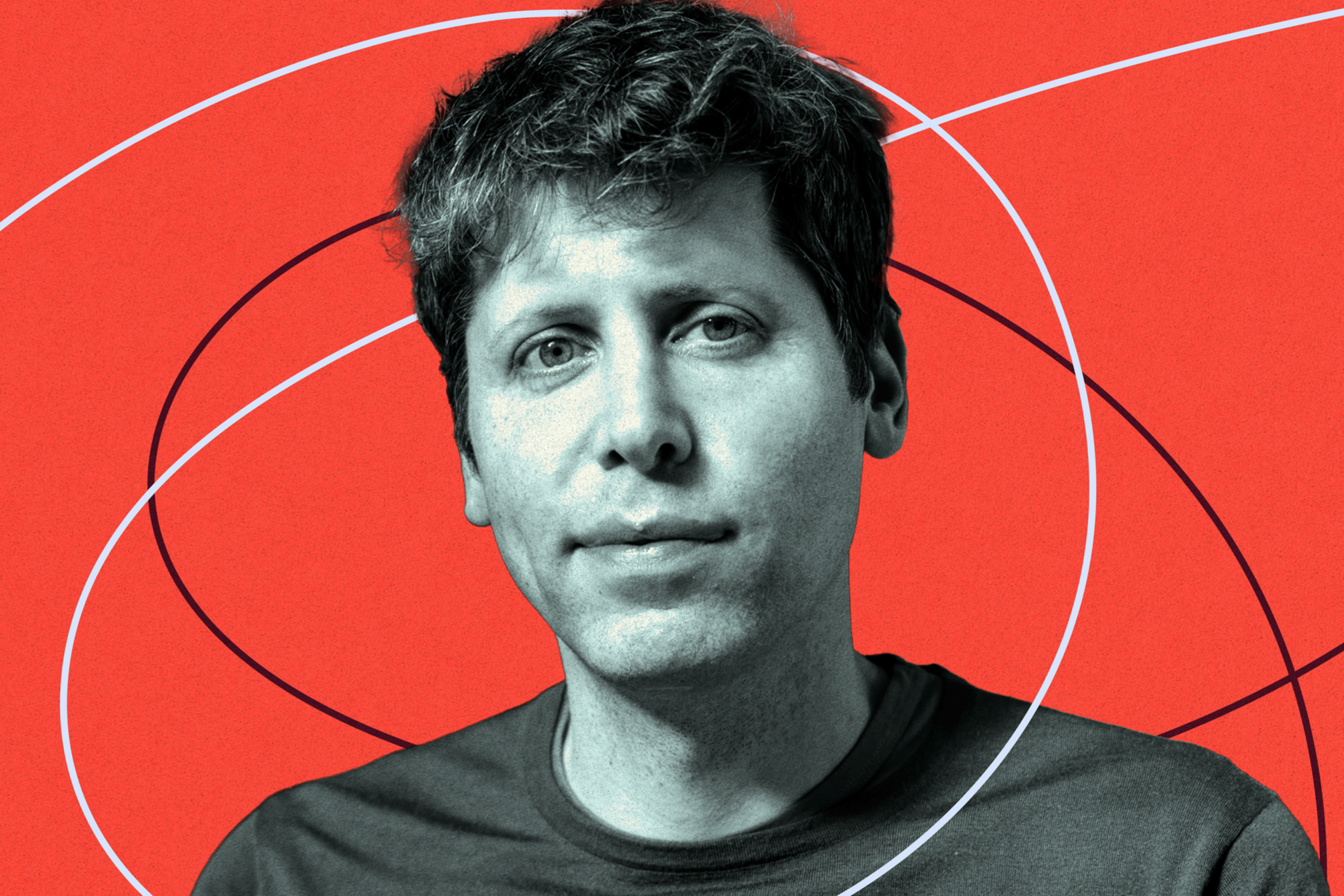OpenAI’s first public blog post (opens in new tab), co-authored in 2015 by co-founders Greg Brockman and Ilya Sutskever, announced the organization as a nonprofit artificial intelligence research company with a goal to “advance digital intelligence in the way that is most likely to benefit humanity as a whole, unconstrained by a need to generate financial return.”
Little did they know at the time, that decision laid the seeds for a drama scarcely seen in the tech world that led to the shocking firing of CEO Sam Altman, a full-scale employee mutiny and the two longtime friends and colleagues being on opposite sides of a conflict that risks tearing apart one of the fastest growing—and most consequential—startups in history.
OpenAI’s future as a company is an open question. If it is to survive, many observers say, its unusual corporate structure may have to change. How that might happen and what comes out the other side are still unclear.
For folks that have been living under a rock, the decision by the OpenAI board of directors to suddenly oust Altman on Friday has become the most closely followed soap opera in Silicon Valley.

Within days, Microsoft CEO Satya Nadella announced Altman and Brockman would be joining his company to lead an AI research division and nearly all of OpenAI’s 770 employees have signed a letter calling for the board’s resignation. Ironically, among the signatories is Sutskever, a board member and one of the architects of Altman’s ouster.
There is enormous pressure to change either the board makeup or the structure itself, much of it coming from investors who have poured billions into the company. Currently, Altman and his allies are reportedly in negotiations to potentially return to the company.

“[The board] doesn’t have any duties to maximize profit, so from a legal perspective, it’s a very clear-cut case,” said Marcel Kahan, a law professor at New York University specializing in corporate governance.
Five things we learned from our bare-all interview with Sam Altman

“From a practical perspective, though, where you have employees and investors who care about the financial aspects, it’s quite different. Just because [the board] have the legal right to replace [Altman] doesn’t mean you don’t have the practical ability to.”
Kahan highlighted the possibility that OpenAI would maintain its overall structure but add assurances to investors that they would get a say in corporate matters.
That could be in the form of additional contractual terms or perhaps the establishment of a joint venture between the nonprofit and the investors that would have stronger controls on behalf of the capital providers.
“If the nonprofit gave up the entire control, they might as well shut the doors and go out of business,” Kahan said. “Everyone likes to be in control of stuff, and control of stuff written about in the newspapers is even more fun.”
Takes Money To Make AI
OpenAI was founded in 2015 by a collection of tech industry leaders, including Altman, Brockman, Elon Musk, LinkedIn co-founder Reid Hoffman and investor Peter Thiel, who tapped a number of top AI researchers like Sutskever to join.
Seeded with $1 billion from its founding partners, OpenAI functioned largely as a research institution in its early history, studying algorithms to better train AI models.
In 2019, soon after the release of GPT 2.0, the second generation of its foundational large language model (LLM), the organization announced the creation of what it called a “capped-profit” company: OpenAI LP.
What OpenAI leaders realized is that the scale of development required to fulfill its mission of creating artificial general intelligence beneficial to humanity required a whole lot of capital, much of it to pay for the massive amount of computational power to develop the technology.

“We want to increase our ability to raise capital while still serving our mission, and no pre-existing legal structure we know of strikes the right balance. Our solution is to create OpenAI LP as a hybrid of a for-profit and nonprofit,” read another post (opens in new tab) co-authored by Brockman and Sutskever.
Essentially, the structure let investors receive a “capped return” allowing OpenAI LP to raise capital and attract more talent. OpenAI LP original investors’ returns are limited to 100x in the first round, meaning a $1 investment is capped at $100 in total profits. The rest would go to the nonprofit parent company.
The primary “fiduciary obligation” of all employees and investors—according to the post announcing OpenAI’s for-profit arm—is to abide by the OpenAI Charter (opens in new tab), which aims to make AI technology safe and broadly distributed.
Written into OpenAI’s governance rules is a requirement that only a minority of board members are allowed to hold a financial stake in the company and “only board members without such stakes can vote on decisions where the interests of limited partners and OpenAI Nonprofit’s mission may conflict.”
Tae Wan Kim, a professor of business ethics at Carnegie Mellon’s Tepper School of Business, says that this structure helps maintain a sense of integrity in the for-profit side’s business dealings.
“The big question here isn’t about whether the board should be for-profit or nonprofit,” Kim, who specializes in AI ethics, said in an email. “Just because a company is a for-profit firm doesn’t give it the green light to do bad or irresponsible things.”
The development of the capped profit model led to Microsoft’s initial $1 billion investment in the company, which helped advance OpenAI’s goals but led to internal tensions over the company’s direction. Over time, Microsoft has grown its ownership stake to 49% of OpenAI’s capped profit arm, with a total investment of $13 billion.
Microsoft has balanced its lack of control or board seats by negotiating contracts that gave it rights to OpenAI intellectual property, copies of source code and insight into the “weights” OpenAI uses for its models, essentially how LLMs are tuned to create desired outputs, according to reporting from the New York Times (opens in new tab),
It’s important to note that OpenAI leaders wrote back in 2019 that they are “willing to merge with a value-aligned organization (even if it means reduced or zero payouts to investors) to avoid a competitive race which would make it hard to prioritize safety.”
That may explain reports (opens in new tab) that the board reached out to former OpenAI staffer and current Anthropic CEO Dario Amodei for a potential merger opportunity and for him to take over for Altman as CEO.
Ironically, the Microsoft investment (and its growing role in OpenAI) led Amodei, his sister Daniela and a handful of other OpenAI researchers to break off from the company in 2020 and start Anthropic in the first place.
Who Has Control?
With the departure of Altman and Brockman, the four remaining board members of the company are Sutskever, Quora CEO Adam D’Angelo, entrepreneur Tasha McCauley and AI academic Helen Toner.

It was these four people who decided to appoint Emmett Shear as interim CEO on Sunday and spurn Altman’s initial efforts to return.
In his first public statements, Shear posted on X about his plan to help restore confidence in the company, including hiring an independent investigator to dig into the process that led to the firing, continuing to speak with partners and reforming management and leadership.
Shear is now a participant in the talks to reunify the company, acting as a representative for OpenAI’s board of directors, according to reporting from Bloomberg (opens in new tab).
Microsoft’s CEO, Nadella, said that his company was mainly working with the management team of the for-profit arm of OpenAI and didn’t have any relationship with the nonprofit board, which has control over the entire organization.

“One thing I’ll be very, very clear on is we are never going to get back into a situation where we get surprised like this ever again,” Nadella said in an interview with Kara Swisher (opens in new tab), referring to changing OpenAI’s governance structure.
“We have all the rights, so therefore we will make sure that we are very, very clear that the governance gets fixed in a way that we really have maturity and guarantee that we don’t have surprises.”
He demurred when asked directly if that meant a board seat, but most observers view that as a likely scenario.
